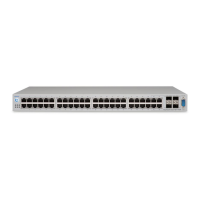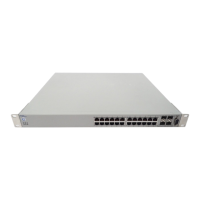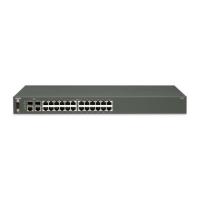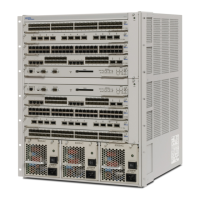Using the BayStack 450 10/100/1000 Series Switch
1-68 309978-D Rev 01
Because S4 does not support 802.1Q tagging, a single switch port on each switch
must be used for each VLAN (see “
VLANs Spanning Multiple Untagged
Switches” on page 1-59).
The connection to S2 requires only one link between the switches because S1 and
S2 are both BayStack 450 switches that support 802.1Q tagging (see “
VLANs
Spanning Multiple 802.1Q Tagged Switches” on page 1-58).
VLAN Configuration Rules
VLANs operate according to specific configuration rules. When creating VLANs,
consider the following rules that determine how the configured VLAN reacts in
any network topology:
• Your switch supports up to 64 VLANs. You can create port-based VLANs and
protocol-based VLANs, in any combination, as long as you do not exceed a
total of 64 VLANs.
• All ports that are involved in port mirroring must have memberships in the
same VLANs. If a port is configured for port mirroring, the port’s VLAN
membership cannot be changed.
• If a port is a trunk group member, all trunk members are added or deleted
from the VLAN.
• All ports involved in trunking and port mirroring must have the same VLAN
configuration. If a port is on a trunk with a mirroring port, the VLAN
configuration cannot be changed.
• VLANs are not dependent on Rate Limiting settings.
• If a port is an IGMP member on any VLAN, and is removed from a VLAN,
the port’s IGMP membership is also removed.
• If a port is added to a different VLAN, and it is already configured as a static
router port, the port is configured as an IGMP member on that specific
VLAN.
For more information about configuring VLANs, see “VLAN Configuration
Menu” on page 3-44.
See also Appendix E, “Quick Steps to Features,” for configuration flowcharts that
can help you use this feature.

